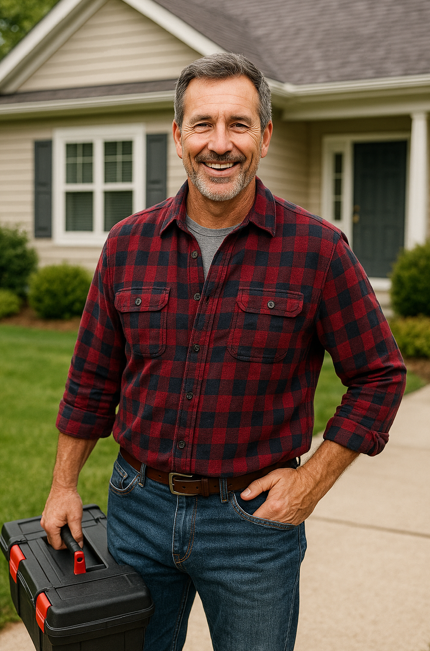If you’ve ever wrestled with inconsistent temperatures, noisy compressors, or rising energy bills, it’s probably time to stop thinking about traditional central AC systems and start considering inverter central ac units. I’ve been in the HVAC business for over 25 years, and I can tell you firsthand that this isn’t just marketing fluff. The way inverter systems operate brings a level of control and comfort that fixed-speed systems just can’t touch.
Let’s break this down—Mike Sanders style—so you know what you’re paying for and why it matters for your home.
What Makes an Inverter Central AC Different?
In a traditional air conditioner, the compressor turns on and off repeatedly to maintain temperature. It’s either running full tilt or completely off. This cycle eats energy, increases wear and tear, and causes noticeable temperature swings.
With an inverter central air conditioner, the compressor doesn’t just flip between on and off—it adjusts its speed to match your home’s needs. That means steadier temps, lower energy use, and way less noise. Think of it like cruise control for your HVAC system. You don’t slam the gas to go 70 on the highway—you gently maintain your speed. That’s exactly what an inverter system does.
The Comfort Difference You Can Feel
You might not notice how often your regular system stops and starts, but you will notice the consistent comfort of an inverter setup. No more freezing one minute and sweating the next. This is especially important if you live in a two-story home or have rooms that get more sun exposure. Instead of dumping cold air and shutting off, inverter central ac units can throttle the cooling output to match each room’s demand.
They’re ideal for modern homes using zoned HVAC systems, which let you cool different parts of your home independently. Want your upstairs cooler than the downstairs in the summer? An inverter can make that happen—efficiently and quietly.
Energy Efficiency That Pays Off
The biggest selling point of inverter technology? Efficiency. These systems often carry higher SEER (Seasonal Energy Efficiency Ratio) ratings, which directly translates to lower utility bills.
You don’t have to take my word for it—just look at the Department of Energy’s guide to central air conditioning efficiency standards. They explain how SEER ratings and compressor performance tie directly into how much you spend to stay cool.
Also, groups like the Consortium for Energy Efficiency (CEE) back inverter systems as a key part of reducing residential energy use across North America. If you care about lowering your environmental footprint, switching to an inverter system is a great step in the right direction.
Better Longevity and Fewer Repairs
Traditional systems wear out faster because of that constant start-stop action. The initial power surge every time the compressor kicks on adds strain to the motor and components. An inverter central air conditioner runs smoother and more consistently, meaning less wear and a longer life span.
According to the Air Conditioning, Heating & Refrigeration Institute (AHRI), variable-speed and inverter-driven systems can reduce mechanical stress by up to 50%. That’s real savings on repair costs, not just hypothetical efficiency numbers.
Perfect for Smart Homes and Modern Living
Inverter units often pair beautifully with smart thermostats and whole-home automation setups. These systems communicate digitally, allowing for real-time adjustments that optimize comfort and efficiency on the fly. It's a huge benefit for folks like me who have busy families and don’t want to fiddle with temperature settings all day.
If you're already invested in smart devices like Nest, Ecobee, or Honeywell thermostats, you’ll love how an inverter system slots into the rest of your setup. These units are also a lot more compatible with evolving home energy trends, like solar power and battery storage.
One Inverter System I Recommend
Now, if you’re in the market for a solid whole-home system that delivers performance without breaking the bank, check out the Goodman 3 Ton 14.5 SEER2 R-32 Bundle. This setup is perfect for homeowners looking to take advantage of inverter central ac benefits while also enjoying Goodman’s reputation for reliability.
It's R-32 compatible, energy efficient, and built to last—something I can confidently recommend whether you're replacing an old unit or starting fresh with new construction.
Things to Keep in Mind Before Upgrading
1. Ductwork Compatibility
Your duct system must be in good shape to get the full benefit of an inverter unit. Leaky ducts kill efficiency, no matter how good your new equipment is.
2. Installation Expertise
Not every HVAC contractor is experienced with inverter systems. They require different handling and setup. Make sure whoever installs yours is trained and certified to work on variable-speed and inverter-driven systems.
3. Size It Right
An oversized inverter system might seem better, but it can cause short cycling and reduce overall performance. Go with a reputable contractor who performs a Manual J load calculation to get the right sizing for your space.
4. Local Incentives
You might qualify for rebates and incentives if you install a high-efficiency inverter system. Check out the Database of State Incentives for Renewables & Efficiency (DSIRE) for current programs in your area.
Final Thoughts from Mike
Listen, I’ve installed everything from baseboard heaters to high-end zoned systems in mansions—and I can tell you this: inverter central ac units are one of the best upgrades you can make for your home. They’re quiet, efficient, long-lasting, and smart-home compatible. If your old clunker is on its last leg or you just want to stop wasting money on high bills, don’t wait. The upfront cost is higher, but the long-term savings are worth it.
And if you're still stuck between options, feel free to check out the many R-32-ready systems available online or talk to your local HVAC pro. Just make sure inverter technology is part of the conversation.
Stay cool,
Mike Sanders
HVAC Pro, Family Man, Straight Shooter







